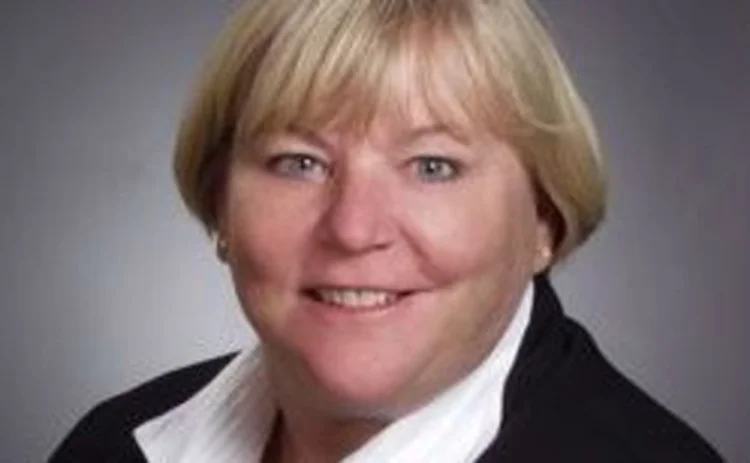The Waiting Game
Report from Corporate Actions Webcast

In corporate actions processing, the driving force most in evidence is firms’ willingness to wait for greater accuracy in corporate actions data, even as market-generated deadlines draw near. A poll held during the webcast found that 75% wanted greater accuracy, closer to deadlines, rather than getting some data, but with less accuracy, sooner in the process (see figure 1).
Providing clients with more timely corporate actions information is a clear need, said Marty Kruse, managing director of global corporate actions at BNY Mellon Asset Servicing. “We’re continuously investing in our corporate actions system from quality and timeliness perspectives,” he said. “We have a few efforts, internally, aimed at platform consolidation to improve efficiencies. Ultimately, the goal is to receive corporate actions information, scrub it and clean it, crate it and notify our clients—to get them the best information we can, as quickly as possible.”
The preference for getting information sooner or waiting for accuracy can depend on a firm’s investment strategy, and how it needs to position itself for a decision on corporate actions events, according to Kruse. “More traditional conservative clients, like a pension fund hiring a third-party fund manager, will want more accurate data even if it’s closer to the deadline,” he said. “There are so many constituents in the chain, from issuer to agent to sub-custodian to global custodian, that balancing all those becomes pretty difficult. It really depends on the type of client and what they want.”
The balance between timeliness and accuracy could sometimes tilt toward speed, as observed by Nanda Kumar, product director at SIX Telekurs. “Our philosophy has always been to start reporting an event as soon as it’s made available,” he said. “We typically do not wait until some of the most critical pieces of data have been announced by the issuer of the corporate action. We start publishing well in advance of the event actually taking place.”
When a decision is made favoring accuracy, however, firms want the corporate actions information delivered “in a way that doesn’t require reworking,” said Deborah Culhane, chief operating officer of Fidelity ActionsXchange.
A significant investment is required to process near real-time corporate actions, according to Kumar. “Everyone wants information ASAP, but the reality is that not all institutions that consume data are ready for that, even though their technology has previously helped meet these types of requirements,” he said. Still, Kumar added, corporate actions departments are beginning to shed their images as cost centers. “They are looked at as an opportunity to drive efficiency and create a competitive advantage,” he said.
The Roles of ISO and XBRL
Along with timeliness, participants in the webcast identified automation and standards as challenges in corporate actions processing. In a poll, about 33% cited standardization and regional differences, and another 33% cited lack of automation and inefficient processing as an issue. Complex notifications are also a challenge, according to 23% of respondents (see figure 2).
The standards issues in corporate actions processing are not only about a lack of use of standards, but rather inconsistency in interpretations, particularly of ISO 15022, according to Ian Davidson, EMEA product head in the electronic markets unit of Citibank. “We’re told that with XBRL and ISO 20022, it will be better,” he said. “I don’t see ISO 20022 kicking in anytime soon, because that takes a lot of investment and the industry is not ready for that for corporate actions. Achieving consistency across markets takes quite a bit of work and we’re still working hard to get there.” Most Citibank customers do not use ISO 20022, and rely on web tools because they haven’t automated processing, added Davidson. Citi’s web tools do generate internal ISO 15022 format communication, he said.
ISO 15022 has become insufficient for corporate actions processing, said Kumar. “Institutions had systems that already worked well, and there were probably not convincing reasons to switch to ISO 20022,” he said. “Even though the 15022 format was the first of its kind for announcements, it didn’t accommodate the fact that corporate actions have become so much more complex than 10 years ago. We hope 20022 will address those factors.”
SIX Telekurs, for its part, is ready to adopt notifications in the XBRL format, according to Kumar. “Our focus is to make sure we send out the announcement,” he said. “Ultimately, we want to make sure we send out those notifications on time and with the highest quality, in the format our clients want to receive.”
Standards are a “key enabler,” as Fidelity ActionsXchange’s Culhane put it. Her firm supports adoption of ISO 20022 and XBRL, along with continuous improvement in standards, as well as new initiatives such as the legal entity identifier (LEI). “LEI brings another dimension of standard issuer counterparty and global identification,” she said.
Reaching Straight-Through Processing
While Fidelity ActionsXchange is externally focused on standards for corporate actions, internally the firm is focused on straight-through processing (STP), according to Culhane. “We found that collaborative benchmarking, not only with our vendors but with our business partners and internal technology partners, is a way to significantly move STP rates in a collective support environment,” she said. “The holy grail of 100% STP is unlikely and unsustainable given some of the factors—changing global markets, restructuring of securities and the unbridled imagination of people who put together deals. While we continue to benchmark toward the nirvana of 100% STP, we know it’s unsustainable unless you continuously monitor that process.”
In another poll question, more than 65% of those surveyed said there is significant room for more automation (see figure 3). Putting their money behind this response, about 56% said they were looking at increasing corporate actions processing budgets, and about 28% said those budgets will increase more than 5%. About 35% said their budgets will stay level (see figure 4). In addition, a majority said they had invested in corporate actions processing improvements or would continue to—34% said they had invested in the past five years and 38% said they had done so and continually do so (see figure 5).
That said, use of faxes and paper documents still exists in corporate actions, according to Citibank’s Davidson. “As many as 20–30% still resist using some form of electronic communication on voluntary [corporate actions],” he said. “The voluntaries are really the issue.” Sometimes it's the larger firms that insist on using paper communications of voluntary corporate actions data, added Davidson.
Pointing to the poll question answer, Davidson expressed surprise that
custodians haven’t made much investment in automating corporate actions. “With the asset managers behind that, there is a lot of catch-up,” he said. “People find in corporate actions, the sheer array of use cases makes it a very complex and long road.”
Another factor in automating processing of corporate actions is the completeness of data. “Before a decision can be made to execute or not, you need a full profile of the characteristics of the instrument,” said Kumar. Ratings data, issuer data and market value are among the fields needed, he added. Depth of data competes with timeliness as a top concern at some firms, according to Kumar, but depth, breadth and timeliness should all be considered equally important, he said.
International Tax Rules
US tax regulation is an outside factor—beyond internal processing issues, standards issues and timeliness of data (see figure 6)—that will have an effect on corporate actions. Stricter cost-basis reporting rules for US firms, being implemented by the US Internal Revenue Service through 2013, will create inconsistency with standards in the rest of the world, as Culhane explained.
“Any firm doing business in the US will have to provide a statement of cost basis of an account within 15 days of a transfer from one financial institution to another,” she said. “If you have an account involved in recent corporate actions that have changed the cost basis of the account or a particular security, and it’s an international asset where it’s difficult to obtain readily the cost basis, you’ll have some real challenges to support this transfer and comply with regulations.”
Where international firms have not had cost-basis reporting requirements,
harmonizing regulation becomes something they must embrace, added Culhane. In addition, IRS requirements on reporting holdings with foreign sources, also effective in 2013, impact distributions from corporate actions.
“The challenge is going to be understanding what qualified or non-qualified basis of accounts are, what the different rates by country types are, and whether the firms that are distributing or paying agents are qualified or not,” said Culhane. “There are a lot of corporate actions implications for this regulation, because of the nature of distributions in this environment. Information regarding tax implications is also going to be a key factor in technology and information processes you employ within your firms.”
In any event, the webcast discussion illustrated that there are robust debates occurring concerning corporate actions processing. The industry awaits decisions from these debates to support the fastest and most accurate processing possible. Those who work with corporate actions need to consider standards issues, processing methods and hurdles, and even how tax rules can affect the response to corporate actions. Corporate actions professionals have a lot of challenges on their plate going into 2012.
Only users who have a paid subscription or are part of a corporate subscription are able to print or copy content.
To access these options, along with all other subscription benefits, please contact info@waterstechnology.com or view our subscription options here: http://subscriptions.waterstechnology.com/subscribe
You are currently unable to print this content. Please contact info@waterstechnology.com to find out more.
You are currently unable to copy this content. Please contact info@waterstechnology.com to find out more.
Copyright Infopro Digital Limited. All rights reserved.
As outlined in our terms and conditions, https://www.infopro-digital.com/terms-and-conditions/subscriptions/ (point 2.4), printing is limited to a single copy.
If you would like to purchase additional rights please email info@waterstechnology.com
Copyright Infopro Digital Limited. All rights reserved.
You may share this content using our article tools. As outlined in our terms and conditions, https://www.infopro-digital.com/terms-and-conditions/subscriptions/ (clause 2.4), an Authorised User may only make one copy of the materials for their own personal use. You must also comply with the restrictions in clause 2.5.
If you would like to purchase additional rights please email info@waterstechnology.com
More on Trading Tech
Recent volatility highlights tech’s vital role in fixed income pricing
MarketAxess’ Julien Alexandre discusses how cutting-edge technology is transforming pricing and execution in the fixed income market amid periodic bouts of volatility
Banks fret over vendor contracts as Dora deadline looms
Thousands of vendor contracts will need repapering to comply with EU’s new digital resilience rules
Where have all the exchange platform providers gone?
The IMD Wrap: Running an exchange is a profitable business. The margins on market data sales alone can be staggering. And since every exchange needs a reliable and efficient exchange technology stack, Max asks why more vendors aren’t diving into this space.
This Week: Trading Technologies completes ANS deal; State Street; Equinix; and more
A summary of the latest financial technology news.
Interactive Brokers looks beyond US borders for growth opportunities
As retail trading has grown in volume and importance, Interactive Brokers and others are expanding international offerings and marketing abroad.
JP Morgan’s goal of STP in loans materializes on Versana’s platform
The accomplishment highlights the budding digitization of private credit, though it’s still a long road ahead.
As data volumes explode, expect more outages
Waters Wrap: At least for those unprepared—though preparation is no easy task—says Anthony.
This Week: ICE Bonds and MarketAxess plan to connect liquidity networks, TS Imagine, Bloomberg, and more
A summary of the latest financial technology news.








